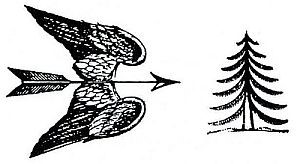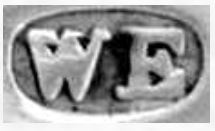William Ehrhardt (born, 1831- died,1897) was born and raised in Germany where he served an apprenticeship as a watchmaker. He arrived in England in 1851, the year of the Great Exhibition. He started his career working for Upjohn & Bright watchmakers in London. Ehrhardt was best known for making watches using machinery rather than traditional methods.
Company
In 1856 Ehrhardt set up his own company in Birmingham and proceeded to make watches by machinery. Ehrhardt was one of the pioneers of watchmaking by machinery in England. He chose Birmingham because it was away from the traditional centres of English watchmaking. Historically, watches were made by hand by craftsmen using specialised skills. Ehrhardt knew that his factory methods would be opposed by the traditionalists and business might suffer. Locating far away from the watchmaking centre was also not going to be a problem finding employees. Ehrhardt wanted machine operators for his factory, not traditional watchmakers.
Ehrhardt operated from several locations in Birmingham. In 1874 he built a new factory, Time Works, in Barr Street to increase production. It is thought that by this time Ehrhardt had produced 200,000 watches. Ehrhardt was granted a patent, No. 6406 dated 1894, for improvements in the hand-setting mechanism of keyless watches.
Productivity
Ehrhardt died in 1897 and his sons William and Gustav continued running the business. In the obituary notice, it was said that 500 watches were made per week with 400 personnel. Production peaked around 1900 when 250 persons were employed, including many girls who attended the machines, and 600 to 700 watches were made per week. This indicates a considerable improvement in productivity, possibly due to additional machinery.
From around 1920, the company began using the name “British Watch Company Ltd.” on some of its watches. The English watch industry was in its dying days by this time and the company only survived until the mid-1920s.
The company used the two trademarks shown here. The winged arrow was registered on 4th February 1878. The tree was registered on 4th August 1911 and was used on watches that carry the British Watch Company name.

Read about other Manufacturers and Makers.
